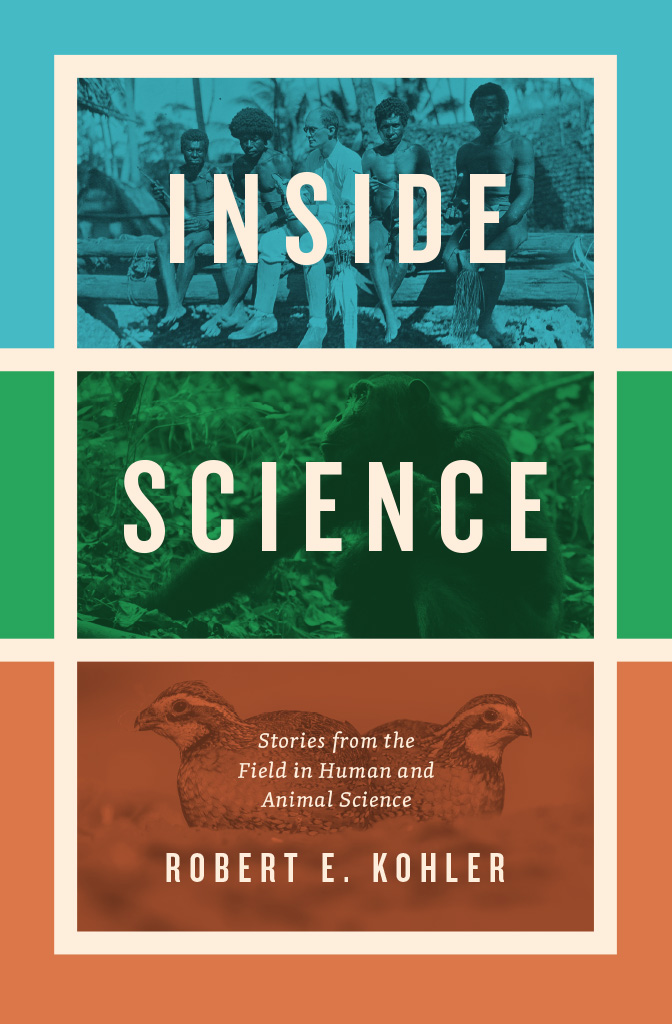
INSIDE SCIENCE
INSIDE SCIENCE
Stories from the Field in Human and Animal Science
ROBERT E. KOHLER
The University of Chicago Press
Chicago and London
The University of Chicago Press, Chicago 60637
The University of Chicago Press, Ltd., London
2019 by The University of Chicago
All rights reserved. No part of this book may be used or reproduced in any manner whatsoever without written permission, except in the case of brief quotations in critical articles and reviews. For more information, contact the University of Chicago Press, 1427 E. 60th St., Chicago, IL 60637.
Published 2019
Printed in the United States of America
28 27 26 25 24 23 22 21 20 19 1 2 3 4 5
ISBN-13: 978-0-226-61798-5 (cloth)
ISBN-13: 978-0-226-61803-6 (e-book)
DOI: https://doi.org/10.7208/chicago/9780226618036.001.0001
Library of Congress Cataloging-in-Publication Data
Names: Kohler, Robert E., author.
Title: Inside science: stories from the field in human and animal science / Robert E. Kohler.
Description: Chicago: The University of Chicago Press, 2019. | Includes bibliographical references and index.
Identifiers: LCCN 2018036562 | ISBN 9780226617985 (cloth: alk. paper) | ISBN 9780226618036 (e-book)
Subjects: LCSH: Life sciencesFieldworkCase studies. | Life sciencesFieldworkUnited States. | Nature observationCase studies. | Participant observationCase studies. | Nature observation. | Life scientists.
Classification: LCC QH318.5 .K64 2019 | DDC 570dc23
LC record available at https://lccn.loc.gov/2018036562
 This paper meets the requirements of ANSI / NISO Z39.48-1992 (Permanence of Paper).
This paper meets the requirements of ANSI / NISO Z39.48-1992 (Permanence of Paper).
For my readers
CONTENTS
SITUATING
These are, of course, ideals. In reality, much science does not evade or suppress situation in a quest for laws that transcend all particulars of place and time. Situating practices are common in the human and social sciences; and in field and environmental sciences, investigations in situ are no less valued than those performed ex situ, in labs and offices. The one creates conceptual space and investigative opportunities for the other, and mixed modes are not uncommon. The more one looks for science in situ, the more one finds. Situating, arguably, is no less characteristic of modern science than its opposite: just less visible and less valued. It is seen as the preliminary groundwork for real science, assembling useful facts but yielding no proofs: that is the modern default view. Part of my purpose in writing this book is to make science in situ a bit more visible, and to expose the disconnect between the powerful but restrictive ideals of desituating science and the reality of creative achievement in sciences carried out in place. I write from the context side, and for it: as a humanist historian whose business it is to recover the forgotten or misremembered contexts of historical actions and events, I have a brief to make for context.
My particular subject here is an intensive kind of situated science that I call resident science. The paradigmatic and most familiar resident practice is the participant observation of social anthropologists, who reside in a community for months or years, observing its customs and culture and taking part in a limited way in its activities. Participation is not a necessary element of resident science, however. In studies of animal communities, for example, observers cannot, or should not, take part. A virtue of resident science as a historical category is that it treats a range of human and natural sciences together that are customarily treated separately. And though it is a small subset of the more capacious and diverse category of situated science, resident science epitomizes the defining character of that larger group. I chose it for my subject because it is a well-defined and bounded topic and a manageable one for a shortish book on a very large subject.
What, then, are the defining features of resident science? One is its reliance on intensive personal observing in situ, by observers who in effect operate inside their objects of study. Resident science is strongly observational, and often open-ended and exploratory. It seeks generalities in patterns of observed particulars more than in deductions from abstract laws and theories. Resident observers treat the contexts and situations in which they and their subjects act, not as stage settings for actions, but as essential elements of phenomena. Resident science is coresident. It is situated, in that observers are themselves present in the situations and actions they observe. And it is situating, in that subjects are observed in the natural or social contexts in which they normally act. This double situatedness of cohabiting observers and observed is the essence of resident science as I understand it.
My current venture into resident science builds on the extensive inquiries into place and practice in science that have in the last thirty years become a defining issue in science studies. The principle themes of this body of scholarship are now widely familiar: that places are not neutral stages for scientific activities but directly affect how they are carried out and received; that all scientific knowledge is initially the product of some particular material and social locale; that some placestruth spotscan give credibility to knowledge claims; and that in becoming what everyone knowsthe universal view from nowhereknowledge must travel and transcend locality of place.operate (or dont). Whereas concepts of place have typically emphasized geographical or spatiocultural features, residence is less a spatial than a relational and ecological instrument of thought. So I have kept the more familiar physical issues of place in the background and focused on the activities and experience of investigationtypically of human or animal communitiesfrom the inside, and how coresidence leads not to the erasure of contexts but to their persistence in the facts and concepts of the science produced. Resident science stays in context and keeps context in. Its best stories are inside stories.
SITUATING SCIENCE
To see how situating is achieved, it is useful to look first at its more familiar opposite. Desituating has been accomplished by various means. Most simply (and superficially) it is achieved rhetorically, by stripping written accounts of situating particulars of who and where, in order to create the impression of timeless universalityof Nature speaking, not I or we. This is the process famously described by Bruno Latour and Steven Woolgar in their landmark book on making facts in laboratory science. More substantively, desituating is achieved conceptually, by embedding things or phenomena in an abstract framework of theory or modeling. Subjects may also be materially desituated, by physically relocating them to sequestered environments designed for the sole purpose of scientific analysis, in which disturbing particularities of context can be controlled or (more or less) eliminated. Laboratories, museums, gardens, aquaria, clinics, field stations, workshops, and offices are familiar types. This actual desituating is the favored method of modern science.
The iconic images of desituated nature are familiar: rats in mazes, small animals in cages, rows of maize in weeded and watered plots, fruit flies in jars, pure-strain bacteria in petri dishes; monkeys in vivaria or backyard caged colonies. In the human sciences there are native informants answering questionnaires on an ethnographers veranda, kids in classrooms watched through one-way glass, or college undergraduates in psychology experimentsperhaps the closest thing there is to a standard human organism. And there are the objects extracted from their natural or social contexts: animal skins in cabinet drawers, dried plants pressed in folios, archaeological and ethnographic artifacts in cabinets, and excised tissues and organs in vitro that stand in for intact organisms in vivo. And let us not forget the models of population cycles that may or may not match the real things, or the reassuringly smooth curves of neoclassical economicsstand-ins for economies that in reality are given to irrational (yet perfectly natural) swerves, swoops, and dives.
Next page
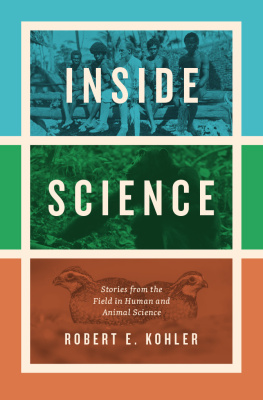



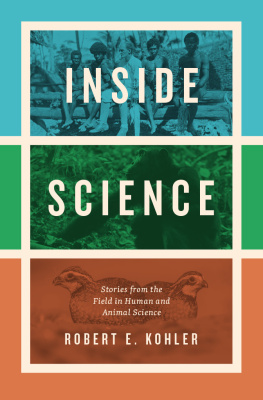

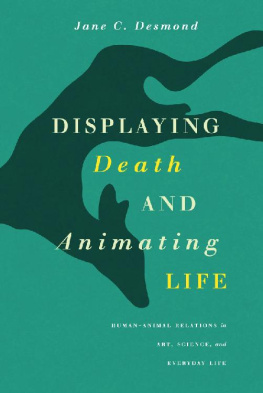
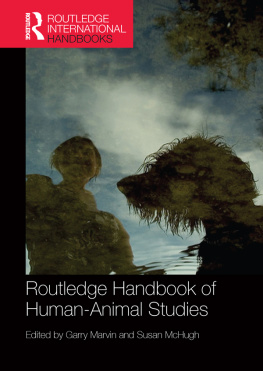
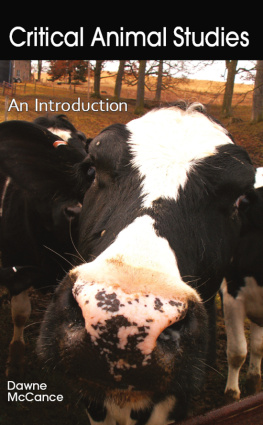
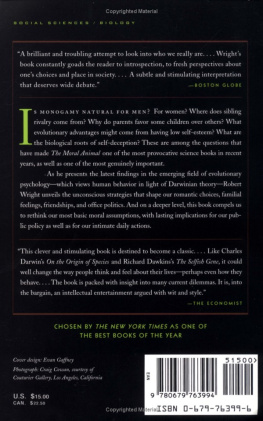

 This paper meets the requirements of ANSI / NISO Z39.48-1992 (Permanence of Paper).
This paper meets the requirements of ANSI / NISO Z39.48-1992 (Permanence of Paper).